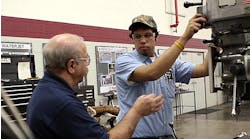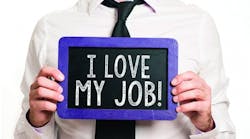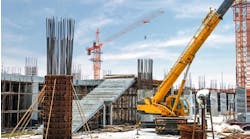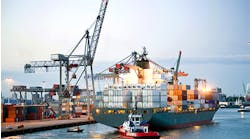Despite decades of reduction in safety-related deaths and injuries on the job, catastrophic accidents appear to be on the rise. In the last 10 years, there have been at least nine industrial accidents that resulted in more than 125 deaths. Two accidents in 2010, the Deepwater Horizon oil spill in the Gulf of Mexico, and the Upper Big Branch mining disaster in West Virginia, not only have caused injury and death, they have wreaked economic havoc on the communities in which they occurred, and incalculable environmental impact in the case of the gulf disaster.
The Deepwater Horizon offshore oil rig operated for seven consecutive years without a single lost-time incident or major environmental event. By that measure they were safe. We now know that for those seven years they were, at least to some extent, “safe by accident.” By all reports, many unsafe conditions and behaviors existed at all levels of the organization that had, through sheer luck, not resulted in an accident. On April 20, 2010, the luck ran out.
This pattern is not unique to the Deepwater Horizon case. Based on decades of research and work with many of the world’s leading corporations, we’ve concluded that many companies are safe by accident because they focus too heavily on incident rate and don’t take a scientific approach to managing safe and at-risk behavior. Sophisticated companies that use only the latest scientific information and technologies (from chemistry and physics to engineering and biology) use so-called common sense, myth, and downright faulty information to manage the behavior of their employees.
There is a better way. An in-depth knowledge of the science of behavior can enable leaders and safety professionals to build systems and management practices that create a lasting corporate-wide commitment to safety, from the boardroom to supervisors, to the front lines. Organizations that fail to take a scientific approach to safety’s human-behavior element are gambling with their futures and ultimately are safe only by accident.
This is not intended to be an indictment of leaders, because the role of leaders in safety has been poorly defined. Vague phrases such as “making safety a priority,” or “creating a safety culture,” have little meaning. What should a leader do today and tomorrow to ensure a safe work environment?
After interacting with thousands of supervisors, managers, and executives, we have rarely met a leader who didn’t care about safety. Lack of caring and concern about safety is not the problem. Leaders are adept at talking the talk: “Safety is the first priority,” “Nothing is more important than safety!” Nevertheless, when we ask leaders about the activities they do each day regarding safety, we often hear general phrases like “I make sure the employees know how important safety is,” or “I emphasize safety all the time.” When they do get more specific, we hear things like, “I remind them to wear their PPE,” or “I talk about safety each day,” or “I start every meeting with safety.”
Two questions come to mind: Are these the right behaviors for leaders to engage in, and is it enough? Many leaders we work with have a nagging feeling the answer to both questions is no. Nevertheless, they aren’t sure what more to do. How do you become an exemplary safety leader? What can a leader do to help create a culture that truly embraces safety?
To help companies create a “culture of safety” here are some science-based rules to get started:
• Don’t base safety incentives on incident rates. Having zero incidents is the ultimate goal of safety, but this flawed system unintentionally rewards luck, can encourage employees to not report incidents to avoid losing the incentive, and may result in reinforcing unsafe and unethical behavior. Instead, motivational systems should be based on preventative measures. By setting up a system that reinforces safe behaviors directly linked to desired results, you will get more people engaging in preventative behaviors, which will naturally reduce your incident rate.
• Mistakes should not be punished. Employees often fail to report safety concerns because they fear reprisal. Punishing at-risk behavior creates a culture of cover-ups in which employees play the blame game. Incidents, near misses and at-risk behaviors all provide valuable opportunities to learn how to make the workplace safer. Discipline, reprimands and other forms of punishment stifle reporting and make achieving a culture of safety impossible. Instead, consider performing behavioral investigations and practice forward-thinking accountability.
• Ensure your hazard identification and remediation process is effective. When employees believe that the company is not taking care of hazards they are much less willing to participate fully in safety programs. Many hazard processes inadvertently discourage reporting by being time-consuming and by failing to provide timely feedback on the status of reported hazards. Often simple adjustments can make these systems more effective.
• Understand the limited value of checklists. Checklists can be an important tool for developing safe behavior and producing long-lasting change. But don’t assume that just implementing a checklist will permanently change behavior. Checklists alone result only in temporary change. Checklists must be associated with positive consequences to ensure they are used consistently and lead to desired improvements.
• Safety signage should serve a purpose. Inspirational signs (“Think Safety”) don’t change behavior. Without the clutter of signs that have no meaningful information, employees may be less likely to ignore important signage. In order to maximize effectiveness, use only compliance signs that direct specific behavior (“Hearing protection required in this area”) and informational signs when appropriate and relevant.
Taking the luck out of safety requires leaders to let go of outdated, low-impact strategies and replace them with evidence-based practices that create a safer workplace.
| Dr. Judy Agnew is an expert in the field of behavioral safety and performance management and is the co-author of Safe By Accident: Take the Luck Out of Safety - Leadership Practices That Build A Sustainable High Performance Safety Culture (November 2010). She is Senior Vice President of Safety Solutions at Aubrey Daniels International, where she helps clients create behavior-based interventions that lead to a company-wide culture of safety. For more information, visit www.safebyaccident.com. |








